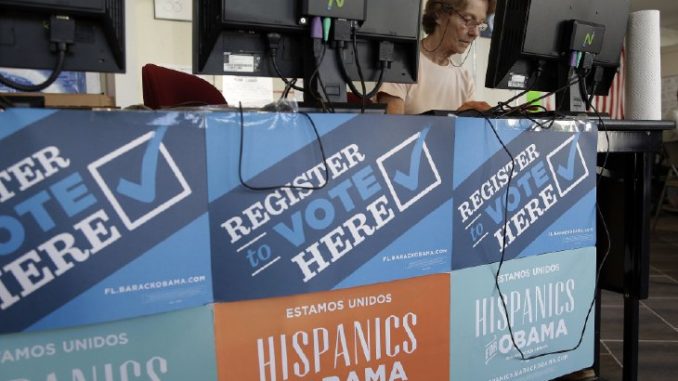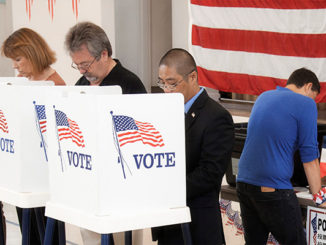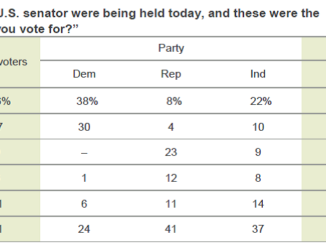
by
Party registration doesn’t matter much. That’s the bottom line conclusion I reach on reading Nate Cohn’s article in the New York Times Upshot blog headlined, “Democrats’ edge in voter registration declining, but looks can be deceiving.”
Cohn is addressing claims by Donald Trump supporters that increases in Republican registration, plus the significant number of registered Democrats who switched and became registered Republicans before presidential primaries in states like Pennsylvania, showed increasing strength for the Republican Party. As Cohn points out, the increases and re-registrations tended to come in areas in which Republican general election candidates have been regularly receiving the votes of many registered Democrats. Such areas include much of western Pennsylvania and northern Florida, as Cohn points out in revealing detail.
Two broader points are relevant here — I think, one which undercuts the arguments of anti-Trump Republicans and one which bolsters the claims of some Trump boosters.
The first is that party registration is not necessarily a good indicator of party loyalty or general election voting behavior. It is a lagging indicator: many people in north Florida or western Pennsylvania registered Democratic back in the days when they were voting for Democrats like George Wallace and Jimmy Carter and Walter Mondale. (If western Pennsylvania and northeast Ohio — steel and coal country — had been a single state, it would have cast its approximately 14 electoral votes for Mondale and against Ronald Reagan in 1984.) These people haven’t voted for many national Democrats in the last two or three decades, but they haven’t altered their party registration, at least until 2016. So in many places — and Cohen provides some splendid documentation of the numbers — party registration is a better reflection of historical than of current general election voting behavior.
There’s another reason that party registration is not a good indicator. Americans, like people in other countries, are capable of tactical voting. If you live in an area where local, state legislative and congressional elections are regularly won by one party, you may register in that party as the only way to have any say who is elected — even if you firmly intend to and do vote for the other party in the general election. I have switched my party registration several times, in order to cast an effective vote for mayor of Washington, D.C., and then to vote in the Republican presidential primary two years later.
Here’s another example. Decades ago I was irritated by New York Times political reporters’ tendency to describe a place’s political orientation by its party registration figures. I went to the data, and discovered that in 1964 Barry Goldwater ran ahead of Republican Party registration in New York City and that in 1972 George McGovern ran ahead of Democratic Party registration in upstate New York. Those were the days when Democrats won almost all general elections in the city and Republicans won almost all elections in most of upstate New York. Tactical voting explains why party registration was misleading. Happily, the legendarily finicky New York Times editors stopped requiring their reporters (who probably knew better) to use party registration as a descriptor many years ago.
Cohn, using data compiled by the Democratic firm Catalist, writes that newly registered voters lean Democratic. That seems right, since 63 percent of them are under age 30, an age group that has tilted Democratic over the last dozen years. He also notes that new voters are less likely to be black than in 2012 and more likely to be Hispanic. That seems plausible: the first black president is not on the ballot this year and the Hispanic population has been expanding. It seems likely that Hillary Clinton will not equal the black turnout or Democratic percentage that President Obama enjoyed in 2012; it seems likely she will roughly equal Obama’s 73 percent percentage among Hispanic voters, but it’s not clear that they will turn out in large numbers for her.
Parenthetical note: Some liberal analysts expect large numbers of Hispanics to turn out in order to vote against Donald Trump. I wonder. I can’t think of an example of unusually heavy turnout in a presidential election by a group that tends to be motivated to vote against, rather than for, a candidate. Perhaps there was such a turnout among blacks in 1964, but I don’t recall it. And I think in the years that followed you could identify high black turnout motivated in significant part by opposition to segregation-associated candidates in the South or mayoral candidates considered anti-black in Northern cities. But the numbers I’ve seen this year suggest lower than average enthusiasm and interest by Hispanics.
A second broad point is about turnout, a subject Cohn does not address but which, like changes in party registration, may affect the general election outcome — and which pollsters have great difficulty forecasting. We do have actual turnout statistics, though, for the two parties’ primaries and caucus. In 2008, the last election cycle in which there were contests for both parties’ nominations, total Democratic turnout was 38.0 million and total Republican turnout was 21.2 million. (My source is Dave Leip’s U.S. Election Atlas website, and I round the figures off for clarity and because there are sometimes discrepancies in the numbers.) Thus 64 percent of primary and caucus votes were cast in Democratic contests — something of a harbinger of Democrats’ advantage in turnout in November.
This year total Democratic turnout was 31.6 million and total Republican turnout was 30.6 million, and so just 51 percent of primary and caucus votes were cast in Democratic contests. Moreover, if you exclude contests after May 3, when Donald Trump clinched the Republican nomination in the Indiana primary and when it became clear to just about everyone paying attention that Hillary Clinton was going to beat Bernie Sanders for the Democratic nomination, total Democratic turnout was 23.7 million and total Republican turnout was 26.2 million, and so 52 percent of total turnout was in Republican contests. In post-May 3 contests, Democratic turnout was 7.9 million and Republican turnout was 4.4 million — 64 percent of total turnout was Democratic, the same as for the whole 2008 cycle.
It may be objected that it’s misleading to dismiss the post-May 3 numbers for 2016 and to include a similar period in 2008, when the Republican nomination was clinched by John McCain by April and the Democratic contest continued to the end of the primaries. But there’s an argument to the contrary. More than 80 percent of the Democratic advantage in post-May 3 turnout came from California, a state with a big Democratic registration plurality, and the rest came from New Jersey, with a similar Democratic registration edge. But in 2008, California voted early in the cycle, when there were live contests in both parties.
Trump boosters have argued that his candidacy brought many new voters into the Republican primaries. Closer examination of the results suggests that the bulk of Trump voters were not newly registered voters, but many were general election voters who hadn’t voted in previous Republican presidential primaries. Obviously, Trump encountered a lot of resistance from many primary voters, a majority of whom did not vote for him.
In any case, the primary and caucus turnout numbers tell me that there is more enthusiasm and energy on the Republican side and less on the Democratic side than in 2008. The primary numbers and post-primary polls tell me that Clinton is having a hard time generating enthusiasm among Hispanics and — especially when third and fourth candidates are included — winning votes from those under 30. They also tell me that Trump is underperforming previous Republicans among college-graduate whites, a group whose turnout tends to be more robust and dependable than among Hispanics and young people. Even with Trump’s weaknesses, Republicans could have a turnout advantage of some magnitude, all other things being equal.
Bottom line: As Nate Cohn argues, the party registration numbers are not a particularly good omen for Republicans, or for Democrats. But the primary and caucus turnout numbers might — might — be a good omen for Republicans.



